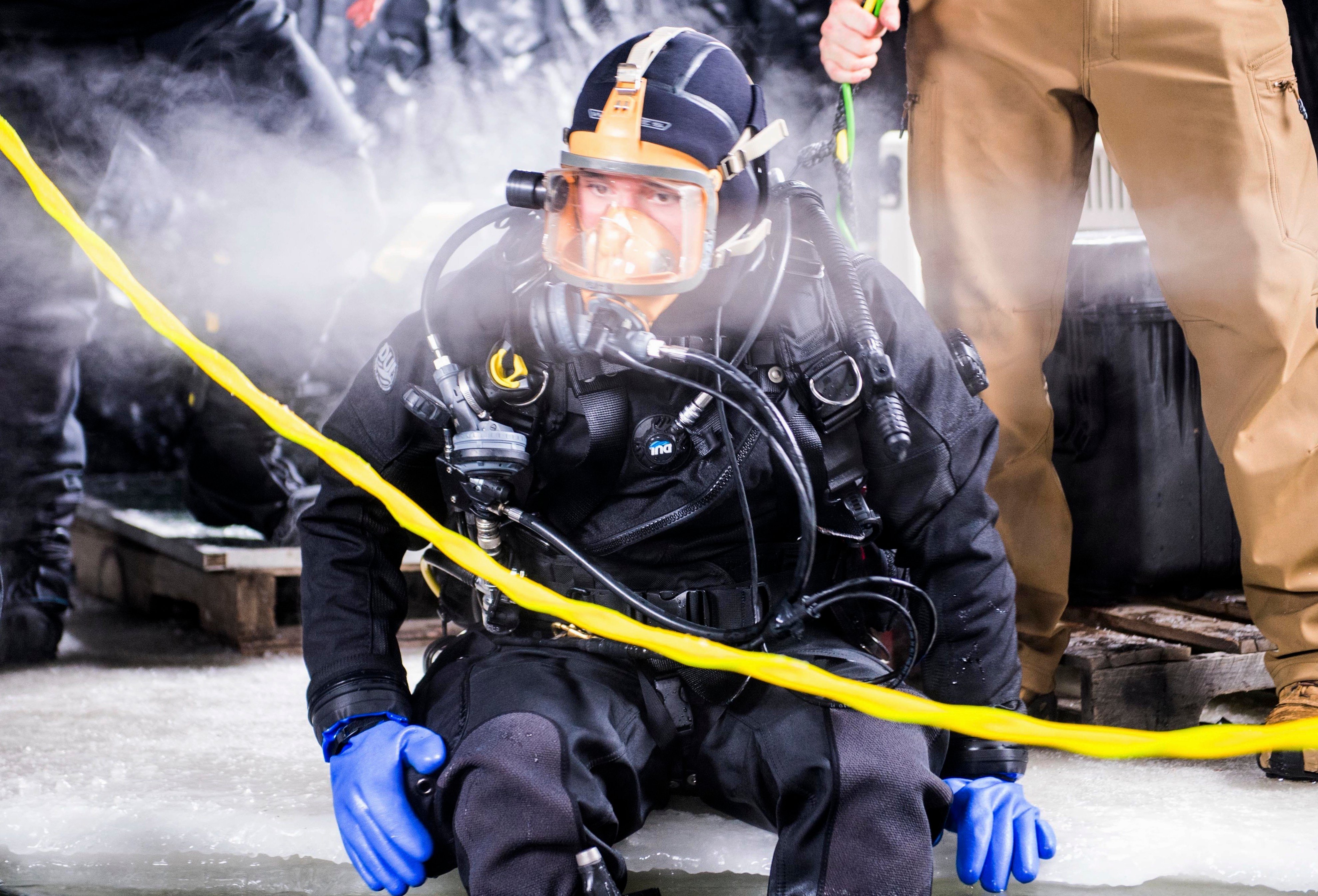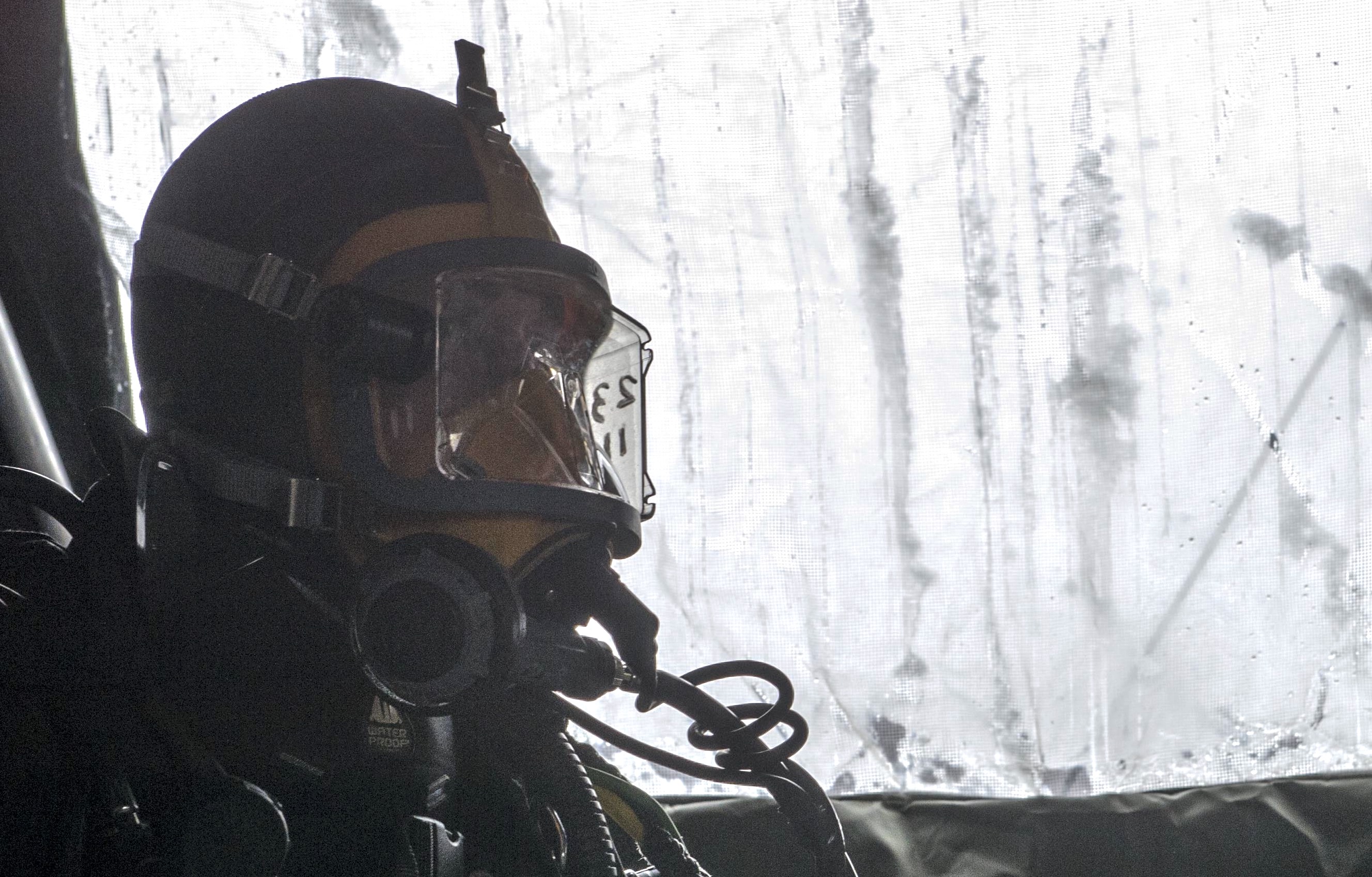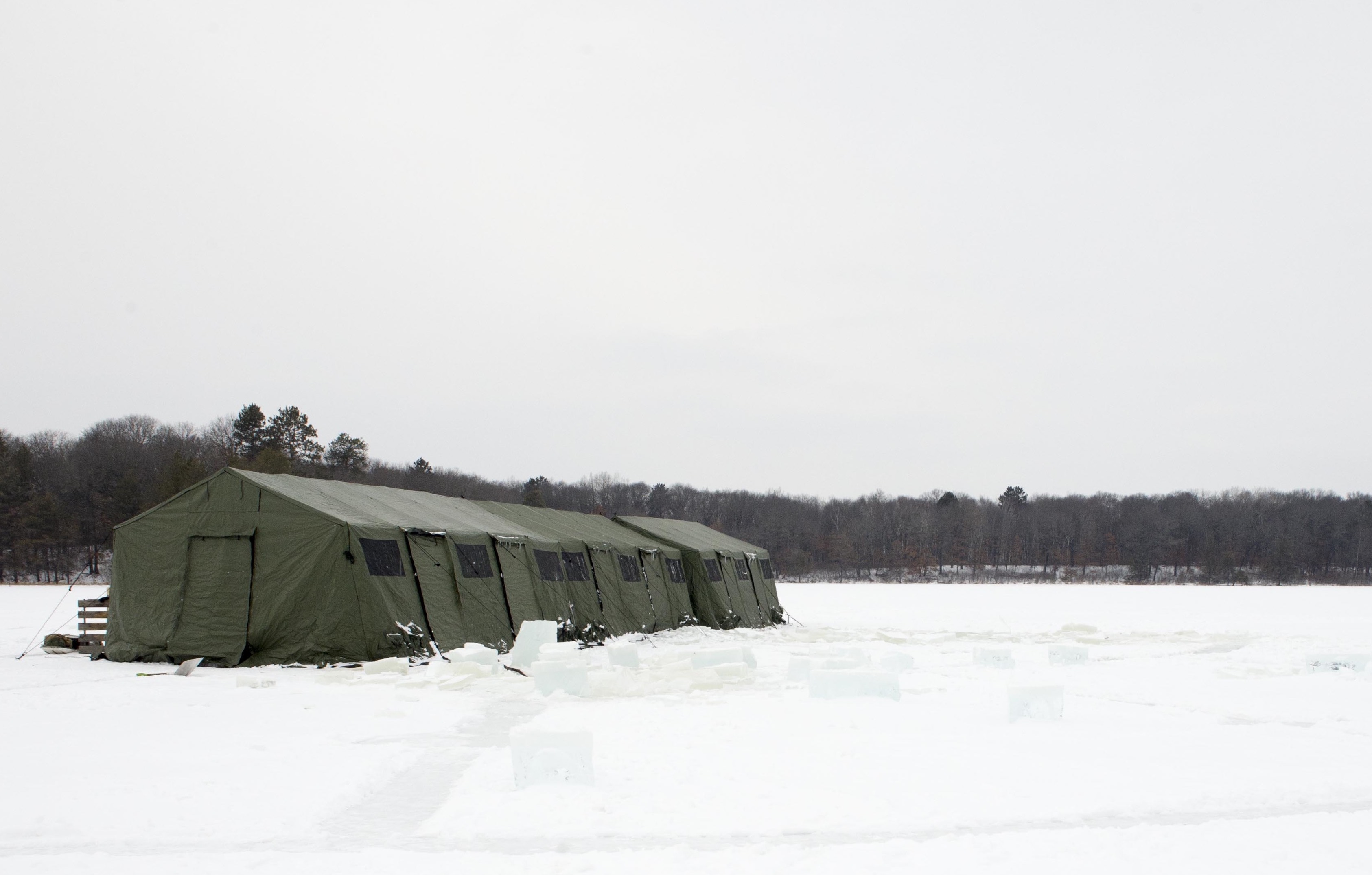
Sailors from the Navy’s Mobile Diving and Salvage Unit (MDSU) 2 are currently in Minnesota for ice diving training, cutting through about two feet of ice to reach the water and donning their thickest drysuits while they rehearse operations in air temperatures of -22 degrees and 36-degree water temperatures.
Though this is the third time the unit has conducted ice diving training at Camp Ripley in Minnesota, this year’s iteration takes on a special significance following the Navy’s release of a new Arctic strategy that calls for the service to be more present and more capable in the increasingly busy and contested Arctic waters.
Chief Warrant Officer 2 Josh Slack, the readiness and training officer for MSDU 2, said in a Feb. 18 interview that “this training just really plays into our vision from the MDSU side in really getting us ready and prepared for the Arctic strategy. We really are trying to lean forward as far as getting ourselves ready to get out there and enhance our presence in the Arctic, and I think this is the biggest first step, although an ongoing step, that we do to do that – so to get us out there, to enhance our presence, to build a more capable Arctic force, this training is a great opportunity and tool that MDSU has available that we plan on continuing to sharpen and execute in the future.”
MDSU 2 mostly consists of Navy divers, who could be called upon to do a range of missions including salvage operations, maritime rescue and recovery of submerged objects, hazardous pollution control, and towing operations. The unit, which falls under Explosive Ordnance Disposal (EOD) Group 2 on the East Coast, typically trains in Virginia Beach and in Key West, Fla.
Temperature is the most obvious difference between Key West versus Minnesota in the middle of winter – and that’s a big difference, since Slack said frigid waters hitting divers in the face can cause them to gag or have mental fogginess, and they need to be able to successfully swap out a broken breathing device for their backup one even while under these icy waters, which takes some practice.
But another main difference can be the matter of life and death: in icy waters, divers don’t have free access to the surface. A whole separate set of procedures go into play to find a missing diver, or to await rescue if a diver becomes disoriented or has an equipment failure, and Slack said it’s important to practice those procedures so that, if MDSU 2 were called on to operate in the Arctic, its divers could do so safely.
In an ice diving mission, the MDSU companies start by setting up: they would go to the GPS location they were given for an item that needs to be recovered, for example, and cut an entry hole into the ice. From there, they use shovels or a snowblower to create a wagon wheel around the entry point: they dig a 25-foot-diameter ring and a 50-foot ring in the snow around the entry hole and connect them with spokes that have arrows pointing back to the entry hole. Ideally, the divers underneath can see some sunlight shining through this pattern to help guide them back to their main entry and exit hole in the ice. The team also cuts an emergency exit hole into the ice, often on the wagon wheel ring, with arrows in the snow also pointing to the emergency exit.

Once the wagon wheel is set up, divers can enter the water for their mission. They bring with them a Shark Marine Navigator, which is a handheld sonar and imaging navigation system, to help find the item they’re searching for. Topside team members can lower a Coda Octopus C500 sonar into the water to help assist in the search.
In case of emergency, the team trains for rescuing a diver who is trapped, injured or lost. In warm waters, divers are taught to surface if they can, and the teammates supporting the dive would send out a standby craft to the diver’s last known location and look for bubbles. In ice, they can’t send out a boat, and they can’t generally see bubbles through the ice.
Under the ice, divers taught to come up to the surface under the ice, put in an ice screw, and await rescue. A standby diver would go in from the entry hole and do a 360-degree sweep around the wagon wheel, in the hopes that their tending line would catch the other diver’s line and they could find each other. With visibility of just a couple feet, the divers have to practice these procedures for themselves and learn how to safely operate and locate lost teammates using strobe lights, the wagon wheel pattern and other tools unique to ice diving.
MDSU 2 sailors arrived at Camp Ripley on Feb. 1 and will train with instructors from Dive Rescue International through Feb. 26, Slack said.
Slack added that, while the in-water training is the focus, the teams will also practice setting up a base camp, building heated shelters and tents, cutting entry holes and emergency exit holes in the water, shoveling the wagon wheel into the snow and other topside activities that accompany the ice diving mission.
“Being an expeditionary command, we want to make sure that we are able to operate wherever, whenever, and be able to assist other forces, specifically the Navy and Marine Corps, to be able to maneuver whenever, wherever and however they choose,” Slack said.
“The diving is obviously the 90 percent of what we do, but the other 10 percent is very much the setup and expeditionary capabilities that is very unique to a MDSU company.”
Though some of the value of the training event is allowing individuals to experience ice diving and feel first-hand what it’s like to don the right gear and conduct the right emergency procedures, Slack said there are larger lessons learned that his unit can share with the rest of the force as everyone tries to learn how to operate in the Arctic.

“We had a great opportunity this year to be able to do a shooting operation and demolition operation up here, and we collected a lot of great lessons learned as far as how to execute demolition and shooting operations while operating at sub-zero temperatures, an environment that we normally do not operate in – as well as the employment of our divers and our dive gear, just basic setup, maintenance procedures, our testing protocol of our gear prior to putting a diver in the water, and also flexing our emergency response procedures as well,” he said.
“And all of that will be collected and disseminated out to the force.”
Slack said MDSU 2 hasn’t specifically been given instructions from higher up in the Navy to prepare for any specific Arctic missions or training, but he said it’s clear what direction the Navy is going in, and MDSU 2 is among the support units the Navy would rely on if a mission were to suddenly arise.
This year’s iteration of the annual ice diving training has special significance “to be sure that if we do get called upon, that the Navy divers clear the way for the U.S. naval forces and stand ready to conduct these diving and salvage operations in any environment.”
“The biggest thing is us being ready. Knowing that we’re trying to provide and build a more capable Arctic naval force, we try to implement this training to make sure that we are prepared for any eventuality if we were to deploy to the Arctic. We also do that by strengthening our partnerships with other units of action, working with the U.S. Coast Guard who has invested in this for a long period of time, and when I say this I mean the ice diving and cold weather realm.”





